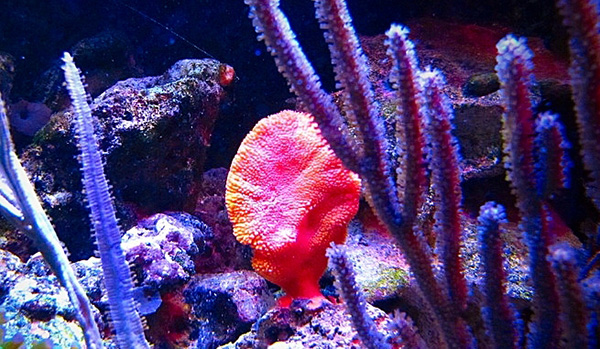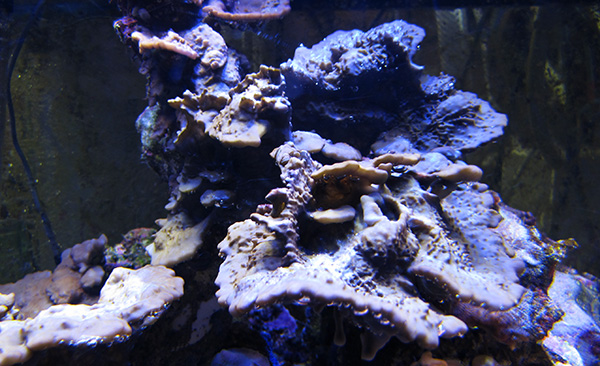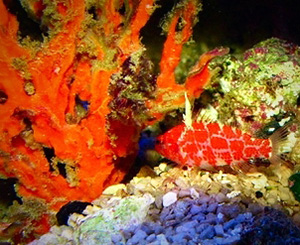If you do any diving anywhere, you will see sponges everywhere. Some of them are more colorful than corals, and some of them you can sit in. All sponges are water pumps and filters, which makes them useful in the sea and in our reefs.
Sponges don’t move, they sit there, eat, and get fat. (Reminds me of one of my old girlfriends. She had the same complexion and personality as a sponge.)
A typical sponge can pump 20,000 times its own volume in water through its cells in one day. All that water is also filtered by the sponge using “choanocytes,” which are just tiny, cone-shaped towers with sticky cells on them to catch food. Each tower has one flagellum, or hair-like thing. The flagellum waves back and forth very fast, creating a pretty strong current through the animal.
The internal structure of a sponge is made of a substance called “spongin.” I wonder where they got that name. Spongin can contain either calcium carbonate, like corals, or silicon dioxide, which is the stuff they made your car windshield out of. Another word for it is glass.
This is also what keeps most things from eating sponges. Except for some angelfish, Moorish idols, some slugs, and sea turtles, almost nothing can or wants to eat a sponge. Besides that, they have very little nutrition and probably taste like car wash soap.

My 100-gallon tank probably holds less than 70 gallons of water (due to the rocks and coral), and I have quite a few large sponges, so I am certain that all of the water in my tank passes through a sponge every day. Probably a few times. About half the sponges in my tank grew wild all by themselves, and the rest I bought.
Depending on what you feed your tank, sponges can be a real benefit to our water by removing microscope foods that would just feed bacteria and turn into nitrate. Most sponges will not compete with corals for food because sponges consume much smaller particles of food than most corals do. Sponges can even filter out bacteria.
In my reef I like to feed frozen foods, like clams. I also feed live blackworms and sometimes a commercially available frozen food. All those foods contain juices that are microscope parts of the food animal. This is like an all-you-can-eat buffet for a sponge, but the real benefit for us is that the sponge is removing those substances from the water and converting it into more sponge, which can be really nice looking, like most supermodels.

This blue sponge has been growing for years in my tank and I have to trim it often because it is getting too big and shades my corals. That is a good thing and means that it is removing large amounts of organic matter from my water. Trimming it removes that matter from my tank just as harvesting algae removes nitrates.
So I think keeping sponges is a good thing, but if you mainly feed dry foods like flakes and pellets, your sponge will probably starve.



